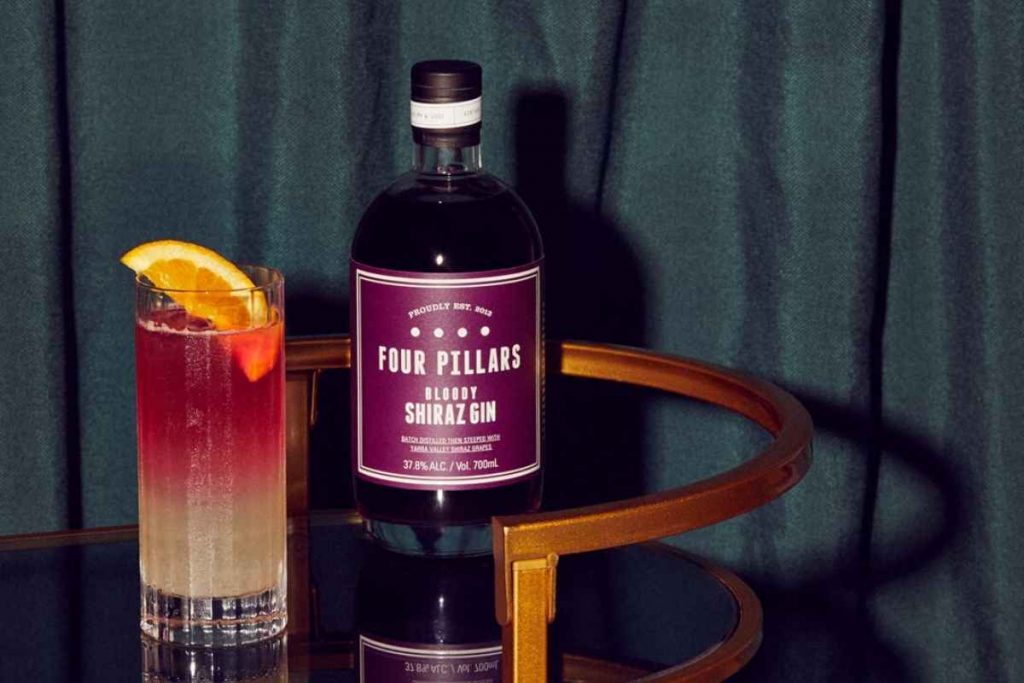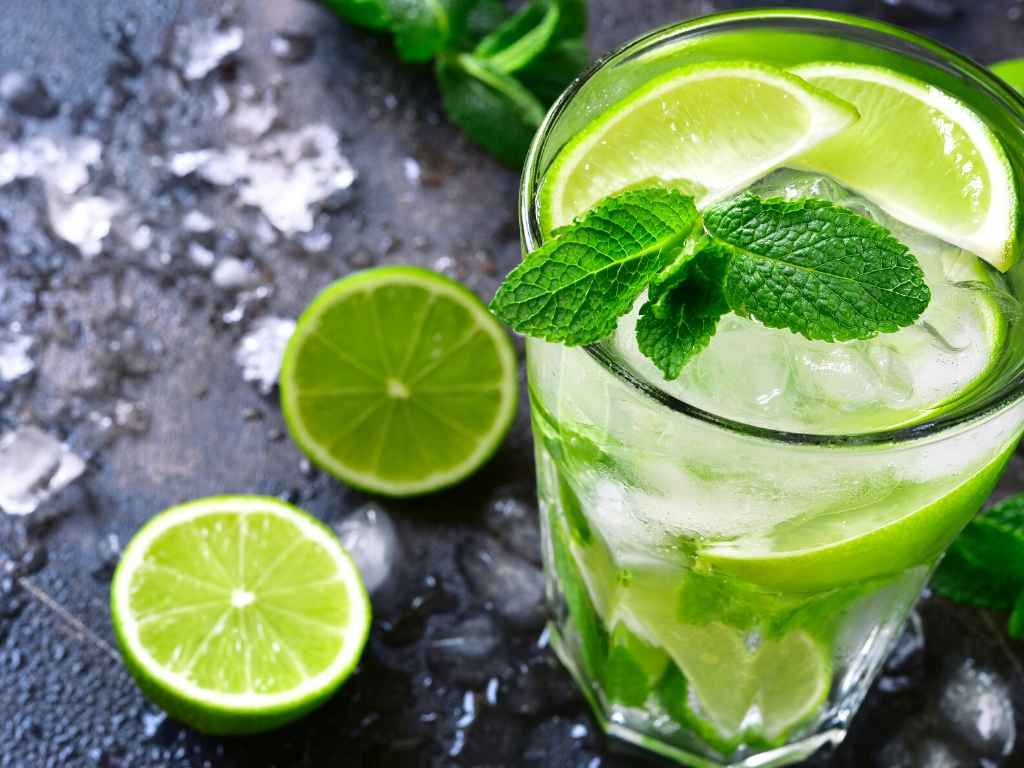Watching bartender videos online can flummox any beginner home bartender. The jargon used is like a second language – building and floating, muddling and hard shaking. You’re lost before you’ve even begun! If you have yet to set up your home bar, thinking about one, or just want to know the lingo, in this post, I translate bartending terminology into English, so you can start to make those cocktails you’ve always wanted and sound like a professional.
N.B. Remember to add the most expensive ingredients last because if you mess up, all you do is throw away the cheap stuff and start again.
Bartending Terminology
Cocktail Specifications
When high-falutin drinks industry folk ask for cocktail specifications what they really want is the recipe. Specifications are just hyper specific (thus, specification) recipes broken down into their many parts. In addition to the ingredients and method used to make the cocktail, specifications include the glassware, type of ice, if any, and extra fancy garnishes needed to finish off the cocktail.
Top tip(ple) – Check out my recipes here

Build your cocktail
To build a cocktail is the art of preparing and serving the cocktail in the same glass – building one ingredient into another until the cocktail is made. Choose the glassware, add the ice, then the ingredients, then top it off with any carbonated drink or juice. Add the garnish and serve.
Top tip(ple) – Try building this cocktail: Harvey Wallbanger

Stir down your cocktail
Stirring down a cocktail means combining its ingredients in a mixing glass (or whatever receptable you have in your kitchen) with ice and gently mixing the ingredients together. As the ice melts, the cocktail is diluted.
To stir like a pro, add ice either before or after you add the ingredients. Then gently dip your barspoon into the mixing glass and set it right up against the side. Twist it around for about 10-15 stirs. Try and rotate the spoon while twisting it. You want the ice and liquid to move all together.
If you place your hand at the bottom of the glass, you’ll feel it getting colder and colder. Then take your barspoon out and then strain it into your serving glass.
Top tip(ple) – Try stirring this cocktail: Old-Fashioned

Strain or Double Strain your cocktail
I just mentioned straining. How can I do this you may ask? It’s not as easy as it sounds. Three different strainers have found their way to the bar: the Hawthorne Strainer, the Julep Strainer and the Fine Strainer.
Most common is the Hawthorne Strainer – named for the Hawthorne Bar in Boston. It’s the one with the handy spring mechanism that makes it easy to use with any shaker and mixing glass.
The Julep Strainer is the one that looks like an oversized spoon with holes in it, usually holding the ice to one side in a mixing glass while the liquid pours into the glass.
The Fine Strainer is the v-shaped one that looks like a mini-sieve. When a cocktail recipe says that the drink has to be ‘double strained” then it means the contents of the shaker or mixing glass are poured through the Hawthorne strainer and then through the Fine Strainer to catch any ice remnants that might make the almost perfect cocktail a little less perfect. Needless to say, most bartenders fine strain everything!
Top tip(ple) – Try double straining this cocktail: Gimlet

Shake your cocktail: Dry and Hard
One of my favourite reasons to go to a bar is to watch my drink being shaken by a professional. The technique is harder than it looks! Shaking a cocktail literally means adding all the ingredients to a shaker and shaking, as simple as that. Why shake? Well, it cools the drink fast, while diluting it at the same time.
Dry Shaking would seems like an oxymoron. Why shake if it’s not to cool down or dilute? Dry shaking- shaking the ingredients without ice first – is usually recommended to make cocktails topped with foam, even foamier. Think the egg white or aquafaba used in a Whiskey or Pisco Sour.
Hard Shaking, on the other hand, is a specific type of shaking invented in Japan by bartender, Kazuo Uyeda. Conceived with the idea that bashing the ice cubes back will not produce the best cocktails, Mr. Uyeda hoped to make the ice float around the cocktail. A few bartenders think it’s the Bees Knees, while others say it’s not always the best way. If you want to try your hand at learning the Hard Shake, check out this video.
Top tip(ple) – Try dry shaking this cocktail: Pisco Sour

Float or Layer your cocktail
“Float like a butterfly, sting like a bee!” Although this phrase de guerre is credited to famed boxer, Mohammad Ali, it could be used to describe how the effects of one too many layered cocktails could knock you out. Floating means adding one layer of spirit at a time into the glass, so you are left with a striped, usually colourful, cocktail.
Just turn your barspoon upside down while slowly pouring the liquid on top of it. Make sure to check the buoyancy (or weight) of each spirit making sure the heaviest is at the bottom. The B52 is a perfect example of this.
Top tip(ple) – Try floating this cocktail: Who Shot Tom Collins

Muddling your cocktail
Every mojito or caipirinha you’ve ordered has been muddled. Usually the limes and mint have been thrown into a glass and smushed down by an over-zealous beach bartender.
My recommendation is to place anything you are muddling into the bottom of your glass, grab your muddler, and gently mash them down, so the juice and oil are released. Yes, you can overdo it, so make sure your mashing doesn’t turn into bashing.
Top tip(ple) – Try muddling this cocktail: Mojito
Straight up, neat and on the rocks
These are super easy – just follow the table below:
- Straight Up = From the Bottle
- Neat = No Ice
- Rocks = Ice
Long vs short
This seems kind of obvious, but a short cocktail is in a short glass with less mixer and a long drink is in a tall glass with ice and usually made long by adding a non-alcoholic mixer like soda water or ginger beer or juice.
Flair Cocktail Making
Think Tom Cruise in the film Cocktail. If you haven’t seen it and you love cocktails, then its de-rigeur for everyone heading into the bar business. Seen by some as juggling for bartenders, flair or flairtending is the art of throwing around bottles, shakers and every other piece of kit in a dazzling, skilful routine while making cocktails at the same time.
Most classic cocktail bartenders poopoo these amateur dramatics, but if you dig a little into their background, a few of them have been flair bartenders in the past!
Top tip(ple) – Learn Flair from the master: Cocktail, the film!
